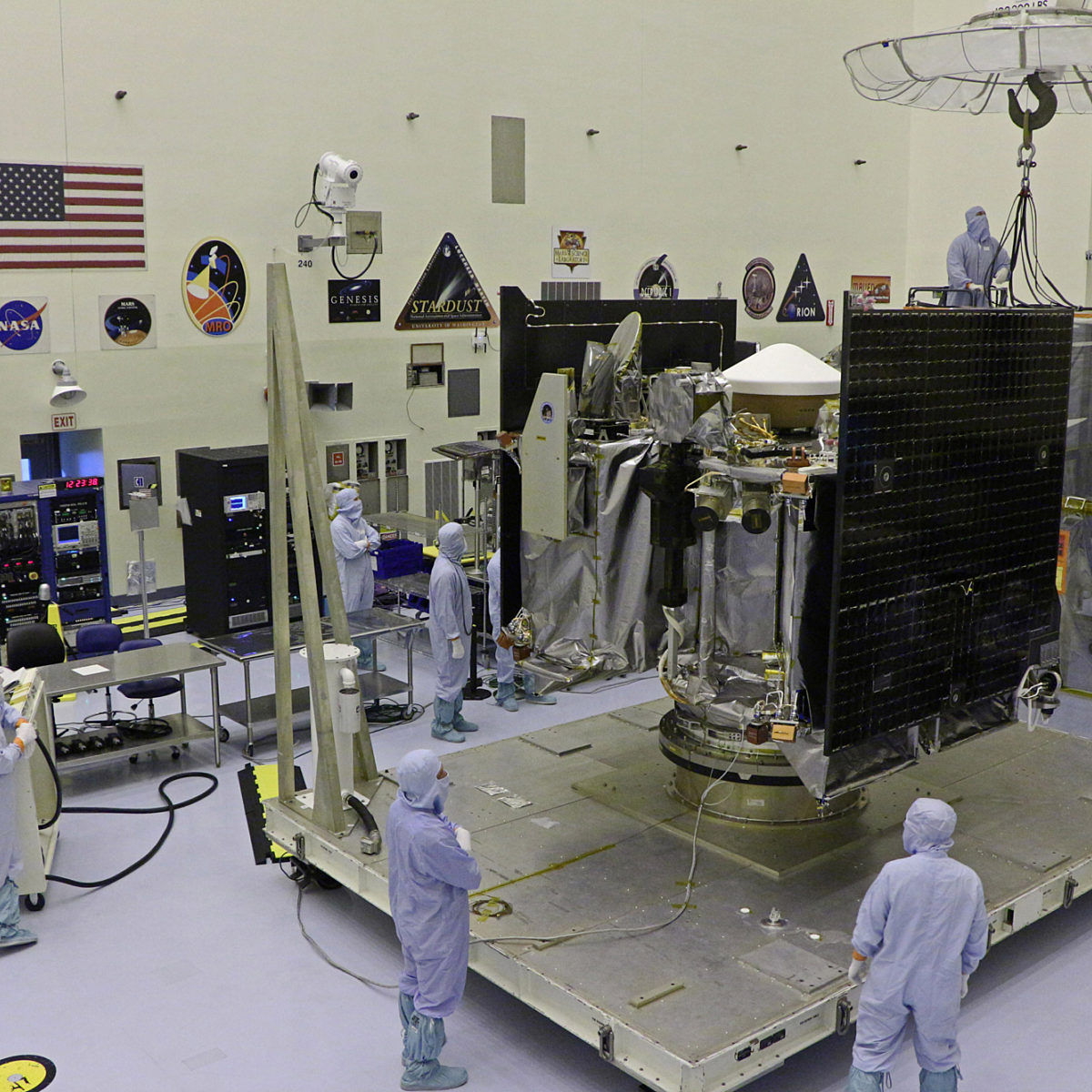All
All
Stories, updates, insights, and original analysis from The Planetary Society.
OSIRIS-REx launch preview
Launch day is coming for NASA's next interplanetary explorer! OSIRIS-REx is on schedule for launch on September 8, 2016 at 19:05 EDT (16:05 PDT, 23:05 UTC) from Cape Canaveral Air Force Station. OSIRIS-REx is the first NASA planetary launch since MAVEN in 2013, and will be the last until InSight in 2018.
Photos: OSIRIS-REx prepares for launch
Only 24 days remain until the opening of OSIRIS-REx's launch period, and final preparations are underway. There is a lot to do in the final months before a launch, but things seem to be going well.
OSIRIS-REx shipped to Florida for September launch
OSIRIS-REx's long journey to an asteroid has begun. The spacecraft departed Colorado on Friday, May 20, travelling aboard an Air Force C-17 to the Payload Hazardous Servicing Facility at Kennedy Space Center.
Engineering an Impact on the New Frontier
Bradley Williams, Systems Engineer for the camera suite on NASA's OSIRIS-REx Asteroid Sample Return Mission, details the path that led him to his current position.
OSIRIS-REx Passes EMI/EMC Testing
The OSIRIS-REx spacecraft has completed the Electromagnetic Interference/Electromagnetic Compatibility (EMI/EMC) system level test.
How REXIS Made It on OSIRIS-REx
The OSIRIS-REx instrument team has successfully installed the Regolith X-ray Imaging Spectrometer (REXIS) on the spacecraft. However, there is more to the story of how REXIS made it onto the spacecraft.
OSIRIS-REx Completes Mechanical Environmental Testing
The OSIRIS-REx team successfully and safely completed sine vibration (sine vibe) testing on the spacecraft prior to the Thanksgiving holiday. The sine vibe tests are designed to verify the system performs as expected after being exposed to flight-like low frequency vibration input.
OSIRIS-REx Progressing Through Environmental Testing
The OSIRIS-REx spacecraft continues to make steady progress toward launch in September 2016. Environmental testing is now underway to ensure the spacecraft is ready for the many conditions it will experience over its mission.
OSIRIS-REx Spacecraft Assembly Nearly Complete
The OSIRIS-REx mission continues to make great progress and is in the Assembly, Test, and Launch Operations (ATLO) phase of the program. There's been many great accomplishments leading up to this point.
Xtronaut – A New Approach to Education and Public Outreach
Historically, NASA missions set aside a portion of their budgets for education and public outreach, or EPO. However, the OSIRIS-REx EPO budget got deleted in 2013 as part of a broader federal policy change. Dante Lauretta decided to make a run at a private company to recover the lost OSIRIS-REx EPO program – and Xtronaut was born!
Populating the OSIRIS-REx Science Deck
The assembly of the OSIRIS-REx spacecraft continues, with many elements integrated onto the spacecraft ahead of schedule. Last month both OTES and OVIRS were delivered to Lockheed Martin and installed on the science deck.
OSIRIS-REx – Testing In Progress
While the OLA, OCAMS, and REXIS instruments on the OSIRIS-REx spacecraft continue working towards their deliveries, other hardware onsite at Lockheed is undergoing testing prior to installation. The hardware is put through tests here on Earth prior to launching into space.
Three mission updates: Trouble for Dawn at Ceres; A new plan for Juno; OSIRIS-REx coming together
With all the focus on Pluto it's hard to keep up with all the other space missions currently exploring other planets. Here are brief updates on three of them.
Four mission assembly progress reports: ExoMars TGO, InSight, OSIRIS-REx, and BepiColombo
2015 has seen few deep-space-craft launches, but 2016 is shaping up to be a banner year with three launches, followed quickly by a fourth in early 2017. All of the missions under development have reported significant milestones recently.
OSIRIS-REx – Seeking Answers to the Sweet Mystery of Life
The nature of the origin of life is a topic that has engaged people since ancient times. The samples to be collected by OSIRIS-REx, returned to the Earth in 2023 and archived for decades beyond that, may indeed hide the secrets to the origin of life.
Development of the OSIRIS-REx Sampling System: TAGSAM and the SRC
The OSIRIS-REx team has been busy assembling and testing the Touch-and-Go Sample Acquisition Mechanism (TAGSAM) and the Sample Return Capsule (SRC).
OSIRIS-REx Begins ATLO (Assembly, Test, and Launch Operations)
The OSIRIS-REx mission passed another major milestone. We now have approval to build the spacecraft.
How Do We Know When We Have Collected a Sample of Bennu?
A huge amount of effort goes into deciding where to try to collect a sample on Bennu. There are roughly nine months to survey, map and model the asteroid to help make this decision.
Planet Formation and the Origin of Life
To understand the possible distribution of life in the Universe it is important to study planet formation and evolution. These processes are recorded in the chemistry and mineralogy of asteroids and comets, and in the geology of ancient planetary surfaces in our Solar System.
The YORP Effect and Bennu
The YORP effect is a phenomenon that affects the rotation rate and pole orientation of an asteroid. YORP is an acronym that combines four scientist’s names: Yarkovsky, O’Keefe, Radzievskii, and Paddack.


 Explore Worlds
Explore Worlds Find Life
Find Life Defend Earth
Defend Earth


 Sun
Sun Mercury
Mercury Venus
Venus Earth
Earth Mars
Mars Jupiter
Jupiter Saturn
Saturn Uranus
Uranus Neptune
Neptune Small Bodies
Small Bodies
















